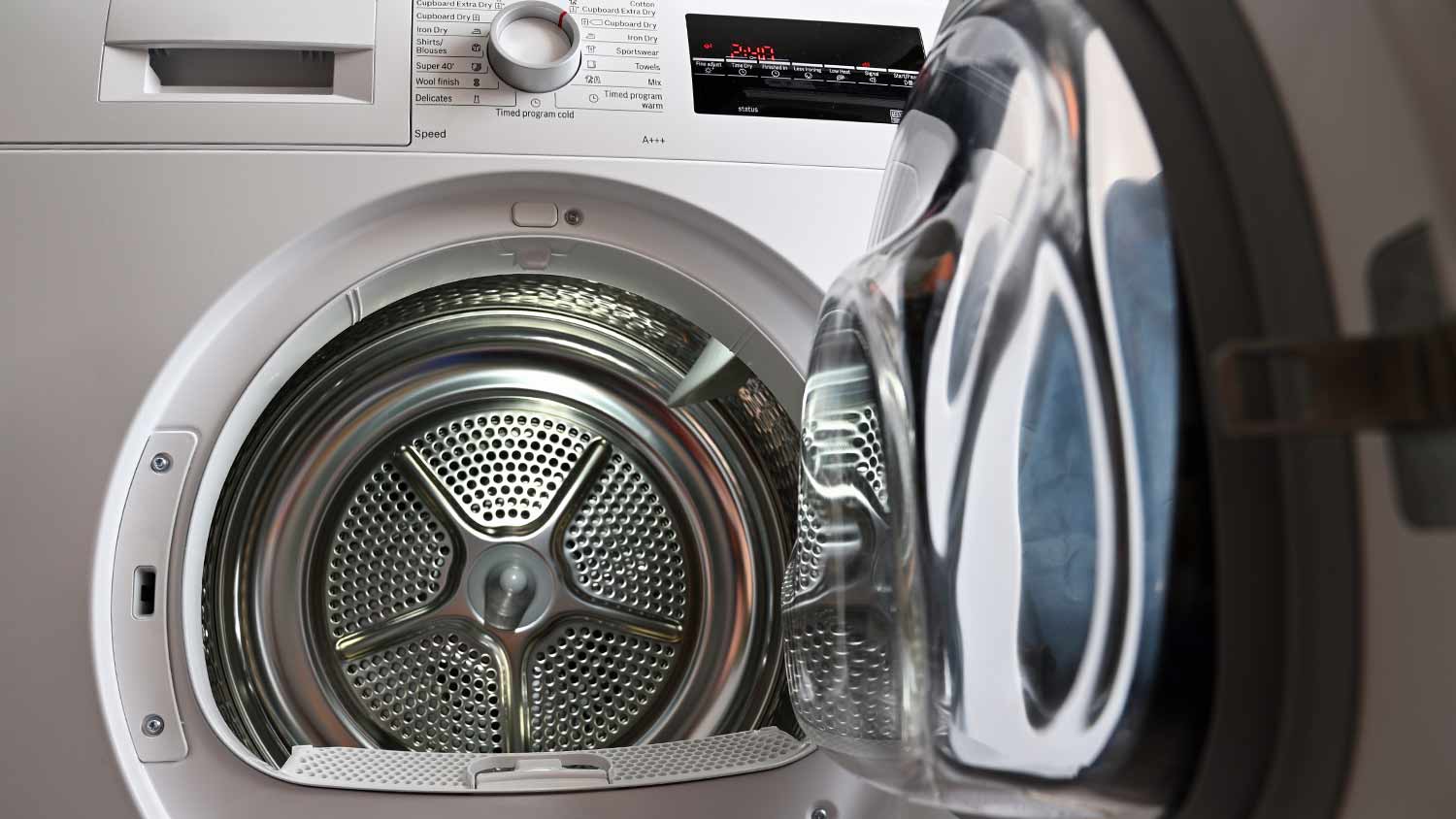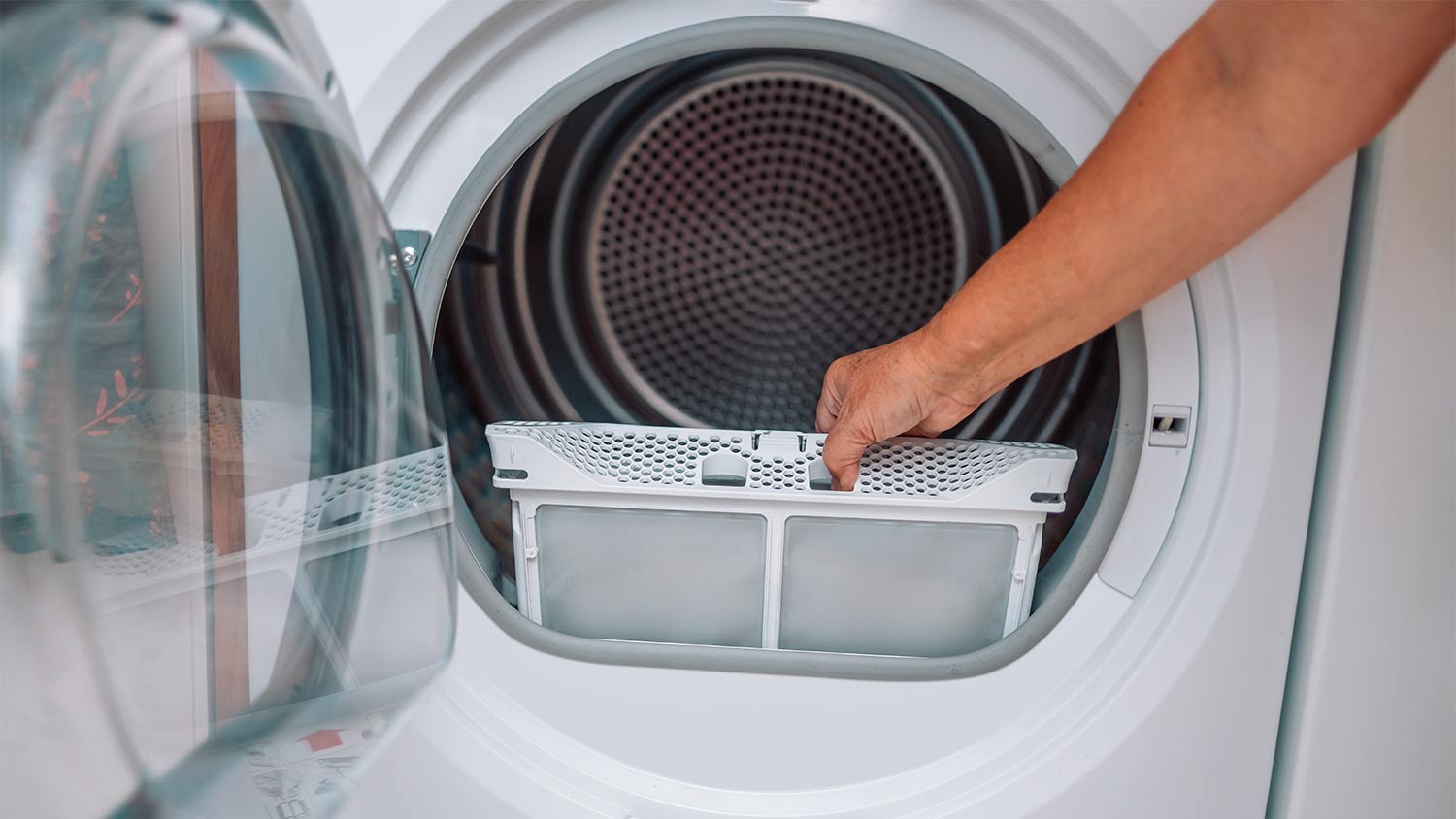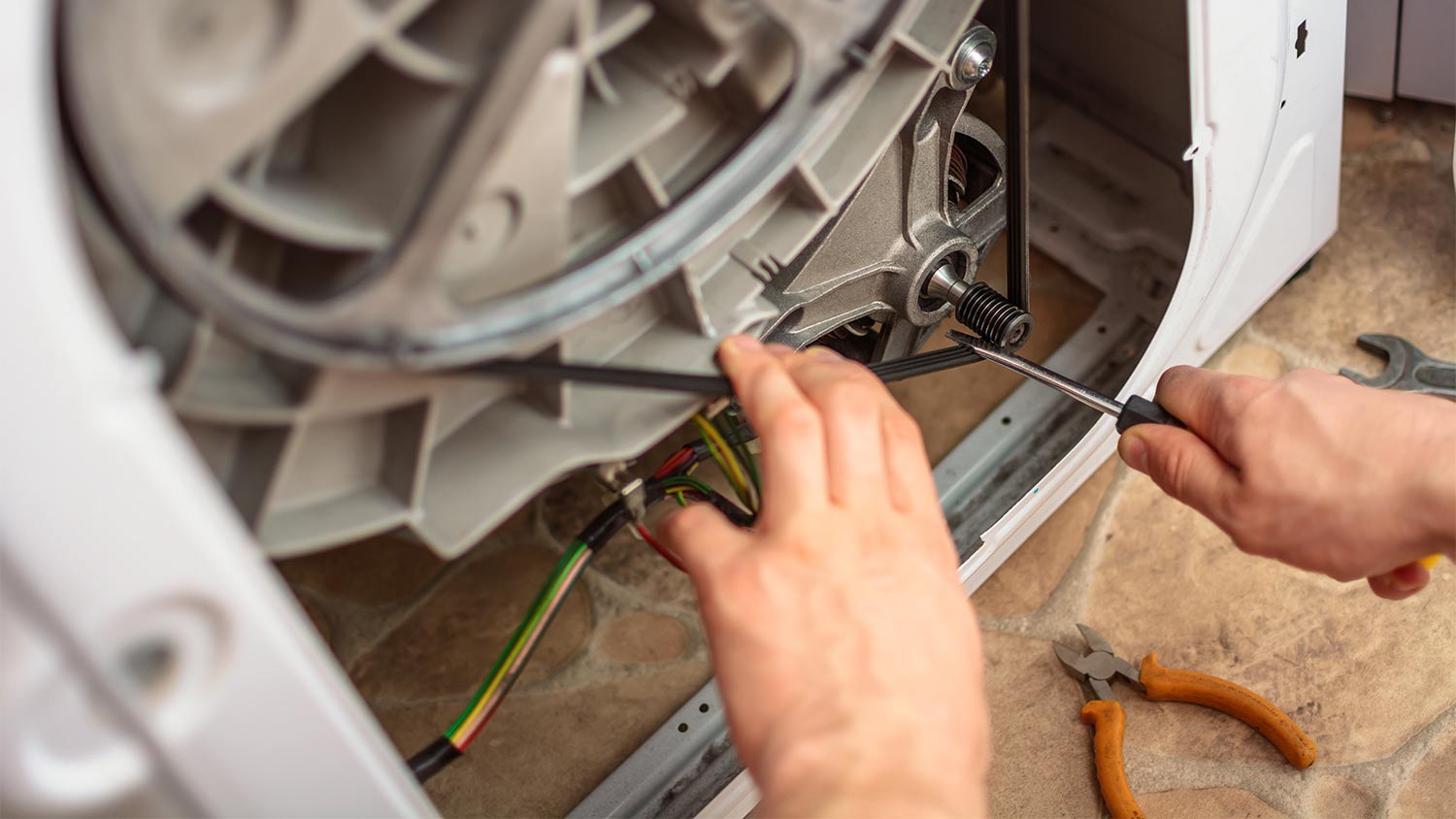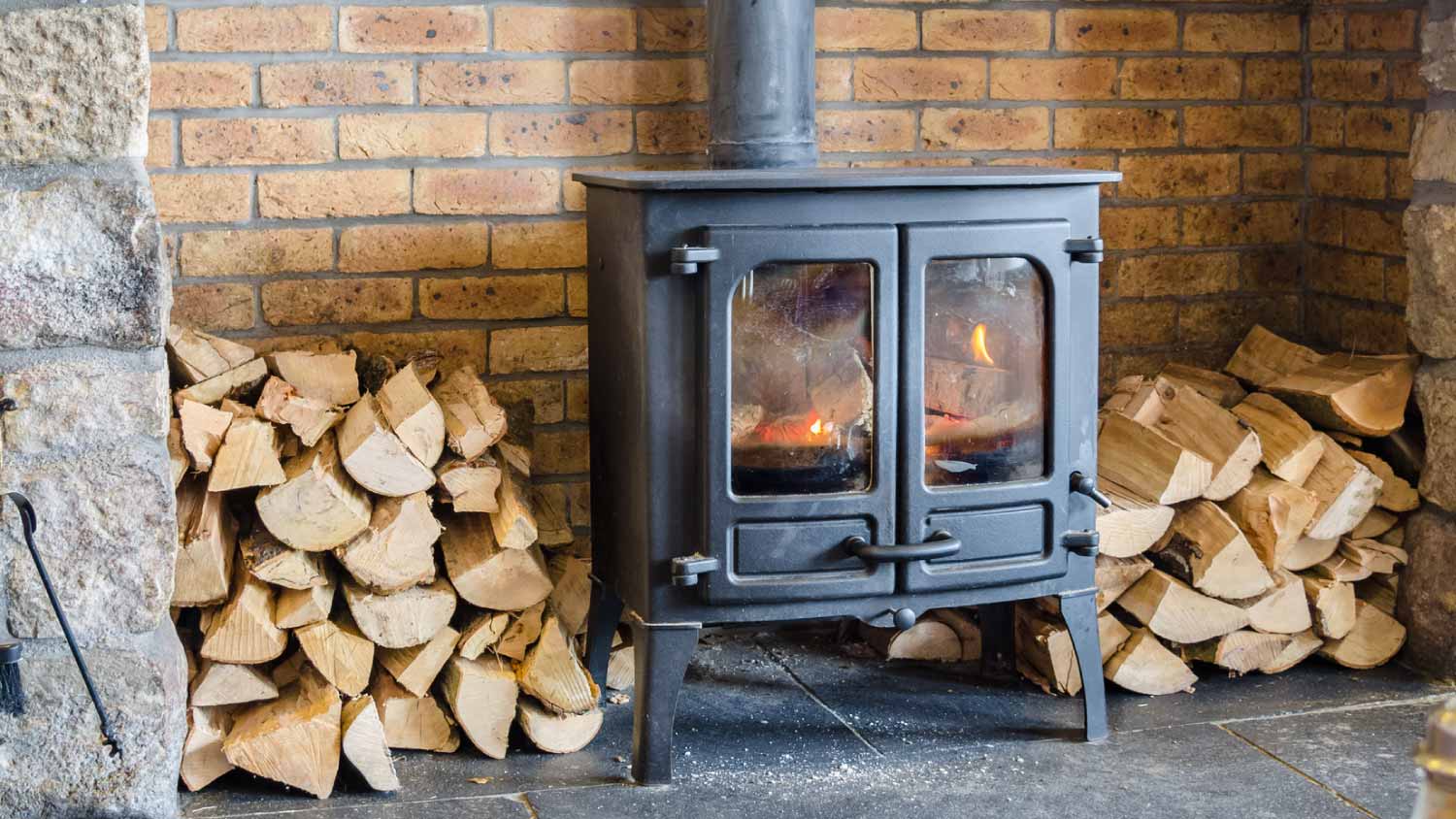Dryer Smells Burnt? 5 Reasons Why and How to Fix It
Don’t get too heated—find solutions to your burning problem below


The most common cause of a dryer smelling burnt is lint buildup.
Other reasons your dryer has a burnt smell include the presence of a foreign object, a faulty motor, and electrical issues.
If a professional repair is needed, expect to pay an average of $100 to $400.
Whenever an appliance emits a burning smell, it’s smart to take the problem seriously and deal with it quickly. As you might have guessed, when your clothes dryer smells burnt, it can be a warning sign of a potential fire hazard like a faulty thermostat or an electrical problem. Keep reading to learn about five common reasons why your dryer might smell burnt along with potential solutions and when to call a pro.
1. Lint Buildup

If you don’t regularly clear out your dryer’s lint trap, the buildup could lead to a burning smell as excess lint is highly flammable. Lint that accumulates in the lint trap, exhaust hose, or vent can create a foul smell at best or a fire at worst.
How to Fix It
First, make it a habit to clean out your lint trap after every load is finished drying. This will help keep lint from accumulating. You should also clean your dryer vent at least once a year, whether you DIY the job or hire a local dryer repair specialist to do it.
2. Faulty Thermostat
When lint buildup isn’t to blame, you could have a faulty thermostat on your hands. A faulty thermostat won’t be able to tell when the temperature inside the dryer gets too hot, which can result in a burning smell. If you’re handy and know how to use an ohmmeter to test the continuity of your dryer, it’s an easy way to tell if your thermostat is failing. Otherwise, you may need to call in a pro.
How to Fix It
Handy DIYers can fix a faulty thermostat by unplugging the dryer, letting it cool down, and consulting the owner’s manual to remove the thermostat from the dryer and test it with an ohmmeter. If it reads any number besides 0, you will need to replace your thermostat by removing the wires from the thermostat terminal with needle-nose pliers. Then, you can use a screwdriver to remove the screws securing the thermostat in place and attach your new one by screwing it in place and connecting the wires.
3. Stuck Foreign Object
Plastic or rubber objects that were kept in pockets and made it from the wash cycle to the dryer can get trapped near your dryer’s heating element or drum and cause a burning smell. Once the object has been located and identified, make sure to empty out pockets before the dry cycle to prevent the problem from happening again.
How to Fix It
Empty out your dryer and check in tight corners or near your dryer’s heating element or drum for unwanted objects. Once the object is located and removed, the smell should subside.
4. Bad Motor

A burning smell accompanied by a loud noise when the machine is running are often signs that your dryer’s motor needs to be replaced. Unfortunately this is not a task for the average DIYer, and you’ll need a licensed professional to inspect your dryer and replace its motor, if needed.
How to Fix It
Reach out to your local dryer repair specialist to take a look at your dryer and determine whether its motor needs to be replaced. If you have an older dryer that’s lasted beyond its recommended lifespan, you may want to weigh the pros and cons of repairing vs. replacing.
5. Electrical Issues
Failing electrical components and short circuits could also be the root of the burning smell, as those components can overheat. If the above problems are not the cause of the burning smell, you may need to have a pro look into the wiring and electrical elements in your dryer to determine if they’re to blame.
How to Fix It
Unfortunately, unless you’re a licensed electrician, electrical issues in your dryer should be handled by a certified professional. The cost to repair a dryer typically falls between $100 to $400 depending on the problem, but an electrician should be able to provide an estimate once they assess the situation.
When to Call a Pro
Consider calling a dryer repair specialist if:
The problem involves replacing or repairing a part
The issue involves electrical components
You have tried DIY repair methods and are unsuccessful
Frequently Asked Questions
You will know if your dryer is overheating by placing your hand on top to feel its temperature. If it’s hot to the touch, that’s a clear sign the dryer is overheated. Other signs include your laundry coming out hotter than usual, a burnt smell when it’s running, or burn marks on your laundry.
According to the National Fire Protection Association, dryers and washing machines cause over 15,000 fires a year, with dryers causing about 92 percent of those fires. Because dryer fires are more common than you might think, it’s important to clear the lint trap regularly and have annual dryer vent cleanings.



.jpg?impolicy=leadImage)

- Appliance Repair Companies
- Washing Machine Repair
- Dryer Repair
- Refrigerator Repair
- Dishwasher Repair
- Oven Repair
- Wood & Pellet Stove Repair
- Freezer Repair Services
- Wood Stove Services
- Gas Stove Repair
- Emergency Appliance Repair Companies
- Ice Maker Repair
- Gas Appliance Repair
- GE Appliance Repair
- GE Refrigerator Repair
- GE Dryer Repair
- GE Dishwasher Repair
- GE Washing Machine Repair
- Samsung Appliance Repair
- Samsung Refrigerator Repair
- Samsung Dryer Repair
- Samsung Washer Repair
- Samsung Dishwasher Repair
- Samsung Oven Repair
- Whirlpool Repair
- Whirlpool Refrigerator Repair
- Whirlpool Washer Repair
- Whirlpool Dryer Repair
- Whirlpool Oven Repair
- Maytag Appliance Repair
- Maytag Refrigerator Repair
- Maytag Washer Repair
- Maytag Dryer Repair
- Maytag Dishwasher Repair
- Kitchenaid Appliance Repair
- Kitchenaid Oven Repair
- Kitchenaid Refrigerator Repair
- Kenmore Appliance Repair
- Kenmore Dishwasher Repair
- Kenmore Washer Repair
- Kenmore Dryer Repair
- LG Refrigerator Repair
- Bosch Appliance Repair
- Kenmore Refrigerator Repair
- LG Appliance Repair Services
- GE Microwave Repair
- Electrolux Appliance Repair
- Electrolux Washer Repair
- Kitchenaid Dishwasher Repair Services
- Wood Stove Inspection
- Dishwasher Installation
- Trash Compactor Repair










